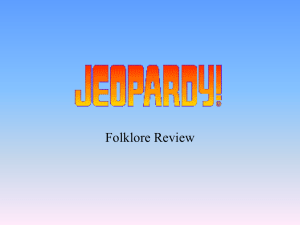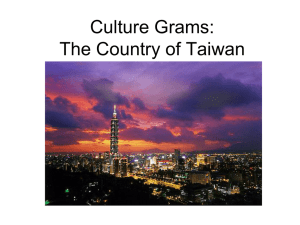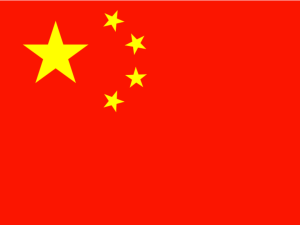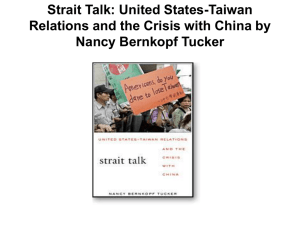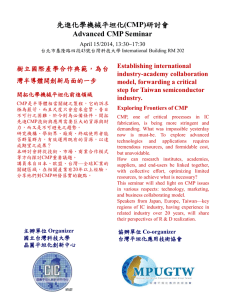PowerPoint **
advertisement
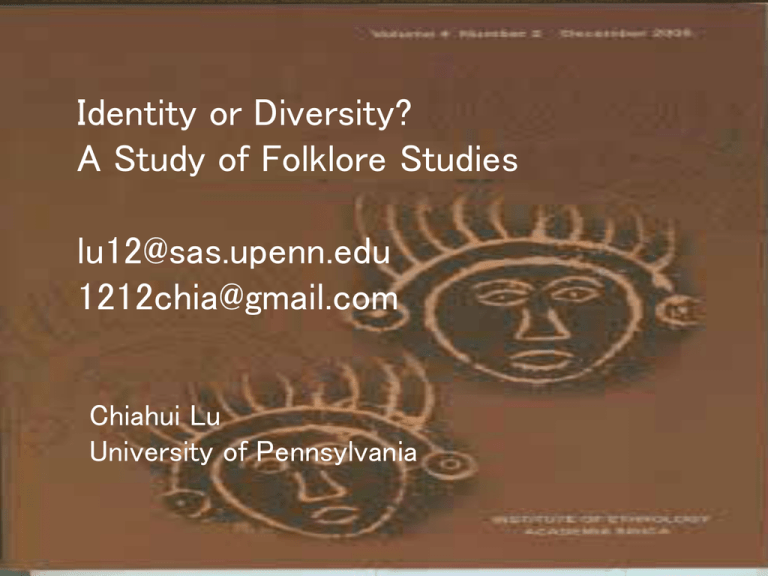
Identity or Diversity? A Study of Folklore Studies lu12@sas.upenn.edu 1212chia@gmail.com Chiahui Lu University of Pennsylvania Traditionally, folktale research, from its inception, has had a two-pronged aim: (1) It has been interested in the nature and origins of oral narration not fixed in writing; Comparative literature and has been established as a new branch of that discipline; (2) it has been interested in folk culture as expressed in the content and form of the folktale. The French sociological and the British anthropological schools, which consider folk tradition--to which the folktale belongs--- as a means, a point of departure, for researching the folk communi Scholars from comparative literature schools generally inquired whether or not the tale-type has spread from one center in an original form, or does it originate independently in different places? Usually leads to an abstract interpretation of the material, The content of the tale The other schools interested to ask what the tale is symbolized? And what is hidden behind the tale of religious thoughts, of psychology, of rites and social life? A concrete analysis and penetration of the material The form or structure of the tale just as any other element of culture The theory that tales can be interpreted as regards their hidden meaning has its root in the neoromanticism. The rise of romanticism in the 19th century revived interest in tradition folk stories, and represented a pure form of national literature and culture to the Brother Grimms. The first serious consideration of the questions concerning in tales was the second edition of the Grimms’ Kinder-und Hausmarchen in 1819. William Grimm (1786-1859) in 1856 put forward two ideas as the final statement of the theories of the Grimms: (1) the circle of those tales which show close resemblances is conterminous with the Indo-European language family and these tales are doubtless inheritances from a common Indo-European antiquity; (2) the tales are broken-down myths and are to be understood only by a proper interpretation of the myths from which they came. These statements give expression to what is generally known as “the IndoEuropean theory” or “the broken-down myth theory. The Brothers Grimm were inspired to study the tale and myth in order to give a picture of the mythology and religion of the Indo-European ancestors in analogy with what was at that time expected: the possibility of the reconstruction of the Indo-European language. This was the natural result of the great interest in comparative philology in the early part of the nineteenth century. This interpretation was embraced with keen interest at the importance of Sanskrit, which came about toward the close of the eighteen century that many European scholars interested themselves in the problem of reconstructing the parent speech from which descended most of the languages from India to Ireland. Later on, the newly discovered relationship of words was the key to unlock the mysteries of the past. Such was the study of “comparative mythology.” Scholars took into consideration that in the Rig-Veda they could go back thirty-five hundred years, and that was far enough to give real indication as to the life of the Indo-Europeans From this extraordinary work of the ancient priests of India, they proceeded to the theory that the original IndoEuropeans in their daily life used just such expression with hidden meanings. This had arisen the Indo-European myths and tales. Their real original meanings had become obscured if not lost, and it was the business of the scholar, through use of the Rig-Veda and his own philological skill, to restore these meanings. Stith Thompson Max Muller (1823-1900), Angelo de Gubernatis (1840-1913), John Fiske (1842-1901), Sir George Cox (1827-1902) Theodor Benfey (1809-1881), entirely rejected both the general Indo-European and the mythological theories. In the “Introduction” to his edition of the Panchatantra in 1859, Benfey sees the origin of folktales in India, and thinks the spread westward had taken place through three channels: (1) before the tenth century by a certain number by oral tradition; (2) after the tenth century by literary tradition along the lines of Islamic influence, particularly through Byzantium, Italy, and Spain; (3) Buddhist material through China and Tibet to the Mongols and from them to Europe. Important as literary vehicles were the Persian Tuti Nameh, Arabic, and probably Jewish writings. Oral tradition also assisted in spreading the tales, especially in Slavic countries. In April 1869, when the young scholar proposed in Vienna that the etiology of hysteria could be traced to early sexual traumas caused by the sexual aggressions of adults towards children, the chair of the meeting commented that it sounded “like a scientific fairy tale.” This incident is significant because Freud was soon to transform his “fairy tale” into the building block of psychoanalysis in accordance with the folkloric theme. Freud’s thinking that later involved a return to alleged acts, such as the bold transition from describing “the wish to kill one’s father” in The Interpretation of Dreams. to “describing the actual killing” in Totem and Taboo. used tales and myths in order to interpret them as symbols of psychological phenomena. Jung regards the tale as an individual creation--- based on collective experience--- comparable with an individual dream, disregarding the basic traits of a chimera or a folktale, i.e. the chimera is a long narrative construction with a “logical” plot, always following its special traditional type, and its subtypes are consistent with different geographical tradition-areas. Further, it fulfills a certain function in cultural and social life and is dependent upon an interaction between the teller and the listeners: the taletelling also has its fitting times according to culture and social group. Andrew Lang (1844-1912) against the theory of a common origin and the interpretation of myths and customs. He emphasized the similarity among tales in different places; he denied that tales were lent and borrowed, from people to people. He compared a Greek heroic myth and popular tales current in Finland, Samoa, Zululand, and reached the conclusion that, the similar incidents and plot occurred among them are not the “detritus” of the heroic myth, but the epic legends, as of Jason or Odysseus, is an artistic and literary modification of the more ancient tale. the study of primitive peoples had come to occupy the attention of a very able group of scholars who began to investigate special aspects of human behavior in the light of the accumulating mass of data being reported from all over the world. In his famous work Primitive Culture, Tylor asserts that the human mind and its capabilities are the same globally, despite a particular society’s stage in social evolution James George Frazer’s (1854-1941) twelve-volume Golden Bough Julius Krohn (1835-1888) and his son Kaarle Krohn (1863-1933) Stith Thompson (1885-1976) Not about Taiwan’s identity or what kind of identity is in Taiwan. What is “folklore”? How people perceive “folklore” in Taiwan? What is the definition of folklore appropriate for Taiwan? Prehistory to 1624 The unearthed agrarian culture (1979 c.) around 3000 BC is believed to reflect the arrival of the ancestors of today’s Taiwanese aborigines (Tainan, 左鎮 人) Prehistory Dutch Formosa The island was colonized by the Dutch in the 17th century, followed by an influx of Han Chinese including Hakka immigrants from areas of Fujian and Guangdong of mainland China, across the Taiwan Strait. 1640 A.D. Map of Formosa-Taiwan by Dutch to 1624 1624-1662 Prehistory to 1624 Dutch Formosa 1624-1662 Spanish Formosa 1626-1642 Kingdom of Tungning 1662-1683 (Zheng Cheng-gong鄭成功) a loyalist of the Ming Dynasty, which had lost control of mainland China in 1644, defeated the Dutch and established a base of operations on the island. Zheng’s forces were later defeated by the Qing Dynasty in 1683. Prehistory to 1624 Dutch Formosa 1624-1662 Spanish Formosa 1626-1642 Kingdom of Tungning 1662-1683 (Zheng Cheng-gong鄭成功) Qing Dynasty rule 1683-1895 From then, parts of Taiwan became increasingly integrated into the Qing Dynasty before it ceded the island, along with Penghu, to the Empire of Japan in 1895, following the First Sino-Japanese War. Japanese rule 1894-1945 Taiwan produced rice and sugar to be exported to the Empire of Japan, and also served as a base for the Japanese colonial expansion into Southeast Asia and the Pacific during World War II. Japanese imperial education was implemented in Taiwan and many Taiwanese also fought for Japan during the war. Republic of China 1945- In 1945, following the end of World War II, the Republic of China (ROC), led by the Kuomintang (KMT, Chinese Nationalist Party), became the governing polity on Taiwan. In 1949, after losing control of mainland China following the Chinese civil war, the ROC government under the KMT withdrew to Taiwan and Chiang Kai-shek declared martial law. Japan formally renounced all territorial rights to Taiwan in 1952 in the San Francisco Peace Treaty. The KMT ruled Taiwan (along with Kinmen and the Matsu Islands on the opposite side of the Taiwan Strait) as a single-party state for forty years, until democratic reforms were promulgated by Chiang Ching-kuo in the 1980s. The reforms were continued by Chiang's successor, Lee Teng-hui, which culminated in the first-ever direct presidential election in 1996. In 2000,Chen Shui-bian was elected president, becoming the first non-KMT president on Taiwan. He was re-elected in 2004.Ma Ying-jeou of the KMT was elected president in 2008, and subsequently re-elected in 2012. The Opium War (1839-1842) Qing Dynasty ended (1911) New Cultural Movement (1915-1925) “go to the folk” Folksong Collecting Bureau, Beijing University (1918) Literary Revolution (1917-1918) May Fourth Movement (1918-1919) Japanese rule 1894-1945 Caused by the “Shantung Decision” (or “Versaille Treaty” 1919) in which the Allied Powers signed a treaty transferred the colonial holdings of Germany in Shantung to Japan, May Fourth became a national protests against the Chinese government’s weak response, as an antiimperialist, cultural and political movement growing out of students and intellectuals demonstrations. Japanese rule 1894-1945 “to create the plain, simple, and expressive literature of the people;… to create the fresh and sincere literature of realism;… and to create the plain speaking and popular literature of society” -----Beijing University Daily , 1918 Japanese rule 1894-1945 Since then, the goals of the New Culture Movement and May Fourth Movement involving not literary matters but the social reform aspects. were Japanese rule 1894-1945 After May Fourth, pai hua 白話 or the “vernacular” became the medium for mass communication; old tradition, the tao 道 (“code of ethics”) and its imitations were defied. Folk-song Research Society 歌謠研究會(1920-1922) Zhou Zuo-ren 周作人 Folk-song Weekly 歌謠週刊 Japanese rule 1894-1945 In 1926 Tsai Yuan-pei蔡元培 (18671940), director of the Academia Sinica at Nanjing, made the remarks: “Min-zu-xue (Folklore, or, strictly speaking, ethnology 民族學) is a branch of learning which examines the cultures of peoples so as to further the descriptive or comparative studies… but in German the singular form for Völkerkunde is Volkskunde which comes from the English word Folklore. This English term was created by W. J. Thomas in 1846 to replace the term Popular antiquities…” This the first time Min-zu-xue in the sense of “Volkerkunde” was seriously understood in China as a disciplined science. Japanese rule 1894-1945 Min-zu-xue showed the influence of European scholars. particularly F. Ratzel, E. B. Tylor, F. Graebner, W. Schmidt, and G. E. Smith, but no less unmistakable in that, even at this early stage, nationalism played a predominant role in the study of folklore in China. Japanese rule 1894-1945 Japanese invasion, 1931 National Revolution 1926-1928 Communist- KMT Split (Civil War) 1927-1937 Long March 1934-35, Mao Ze-dong The first stronghold of Western interest Politically the seat of the Kuomintang (Chinese National Party國民黨; KMT The National Sun Yat-sen University Japanese rule 1894-1945 Guangdong, The KMT-Communist split of 1927 created great tension in south China, especially in the Sun Yet-sen University New ideas were being shaped. Guo Mo-ruo郭沫若 (1892-1978), Lu Xun魯迅 (1892-1978), Fu Si-nian傅斯 年 (1896-1950), Zhong Jing-wen鍾敬 文 (1903-2002), Gu Xie-gang顧頡剛 (1893-1980), Lou Zi-kuang婁子匡 (1905-2005) Japanese rule 1894-1945 Folklroe, must be “expressive of sympathy with the proletariat, socialistic, and realistic The research was no longer limited to folksongs; instead, riddles, legends, folktales, gods and deities became the focus of interest A desire for depth and breadth rather than mere collection for collection’s sake now manifested itself Japanese rule 1894-1945 The “Long March” Covered eleven provinces, crossing the aboriginal zones of the Qiang’s羌族, the land of the Lolo’s彝族, and the Gansu甘肅 of the Hui’s回族. By October 1935, they reached their destination, the Shanxi陝西base in the Northwest. Memories of the “Long March” are attached by the Communists to these aborigines, who “swore blood brotherhood” with the Reds,” and whose folklore is now under extensive investigation and constitutes the main subject of folklore research in contemporary China. The “popularization” of art and literature is governed by a single dogma: the majority of the masses are illiterate, and need “culture, knowledge, art and literature… which are readily acceptable to them…” unique mission: to educate the masses, technically utilizing story-telling, ballad-singing, plantation songs (yang ge秧歌) and other suitable forms. However, as it was also Mao’s contention that “art and literature are subordinate to politics,” political errand: to arouse class consciousness, a preparation necessary for the “people’s liberation The Sino-Japanese war 1937-1945 Civil War II 1945-1949 Japanese rule 1894-1945 KMT’s withdrawal to Taiwan Japanese rule 1894-1945 Kōminka: "Subjects of the Emperor" (19371945) A map of the Japanese Empire, 1939-09-01. Dates shown indicate the approximate year that the Japan gained control of the highlighted territories. A 1911 map of Japan, including Taiwan. Taiwan Aborigines Indigenous peoples of Taiwan estimated to constitute 2% of the population of the island, about 510,000 people. Although Taiwanese indigenous groups hold a variety of creation myths, recent research suggests their ancestors may have been living on the islands for approximately 8,000 years before major Han Chinese immigration began in the 17th century Taiwanese aborigine woman and infant, by John Thomson, 1871 Taiwanese aborigines areAustronesian peoples, with linguistic and genetic ties to other Austronesian ethnic groups, such as peoples of the Phillippines, Malaysia, Indonesia, Madagascar, Polynesia, and Oceania. The issue of an ethnic identity unconnected to the Asian mainland has become one thread in the discourse regarding the political status of Taiwan. Taiwan’s heavy influence by fifty years of Japanese colonialism (1895-1945), the KMT (Chinese Nationalist Party) retreat in 1949 after defeat by the Communist Party of China, and the ideology of nativism (or nativistic movement) after the lifting of Martial Law in 1987, make assumptions about the nature of contemporary Taiwan societies relevant to the practice and legitimation of folklore studies. Taiwanese folklore studies have been largely restricted due to the problem of cultural essentialism, of taking the concept of “Taiwan” as axiomatic, lacking synthesis or theorization. Folklore is the traditional art, literature, knowledge, and practice that is disseminated largely through oral communication and behavioral example. Every group with a sense of its own identity shares, as a central part of that identity, folk traditions–the things that people traditionally believe (planting practices, family traditions, and other elements of worldview), do (dance, make music, sew clothing), know (how to build an irrigation dam, how to nurse an ailment, how to prepare barbecue), make (architecture, art, craft), and say (personal experience stories, riddles, song lyrics). As these examples indicate, in most instances there is no hard-and-fast separation of these categories, whether in everyday life or in folklorists’ work. ----AFS website Dell Hymes Folklore study is the study of communicative behavior with an esthetic, expressive, or stylistic dimension. Dan Ben-Amos folklore is artistic communication in small groups Jan Brunvand Folklore comprises the unrecorded traditions of a people Henry Glassie Folklore is traditional. Its center holds. Changes are slow and steady. Folklore is variable.. Mary Hufford Folklife is reflected in the names we bear from birth, invoking affinities with saints, ancestors, or cultural heroes Tradition [means] not some static, immutable force from the past, but those pre-existing culture-specific materials and options that bear upon the performer more heavily than do his or her own personal tastes and talents. We recognize in the use of tradition that such matters as content and style have been for the most part passed on but not invented by the performer. Dynamic recognizes, on the other hand, that in the processing of these contents and styles in performance, the artist’s own unique talents of inventiveness within the tradition are highly valued and are expected to operate strongly. Time and space dimensions remind us that the resulting variations may spread geographically with great rapidity (as jokes do) as well as down through time (good luck beliefs). Folklore is made up of informal expressions passed around long enough to have become recurrent in form and context, but changeable in performance. The word "folklore” names an enormous and deeply significant dimension of culture. Considering how large and complex this subject is, it is no wonder that folklorists define and describe folklore in so many different ways. Try asking dance historians for a definition of "dance,” for instance, or anthropologists for a definition of "culture.” No one definition will suffice–nor should it. Taiwanese Literature 6 Taiwan History, Culture, and Language 1 Taiwan Culture, Language and Literature 2 Hakka Studies 2 Department of History 28 Chinese History (26) & Taiwan History (2) Anthropology 2 Ethnology 2 Ethnomusicology 3 Taiwanese Folk Art 3 Ethnic Relations and Culture None of these definitions answers every question by itself, and certainly none of them is the Taiwan’s official definition (we don’t have one), but each offers a good place to start.

